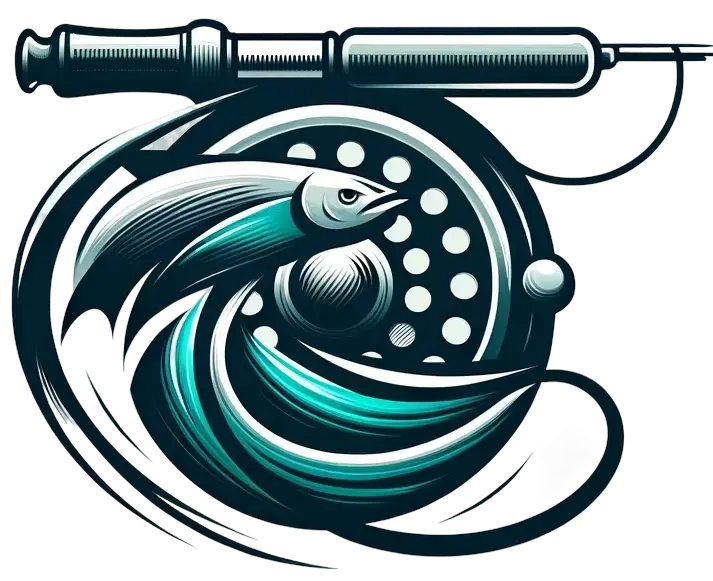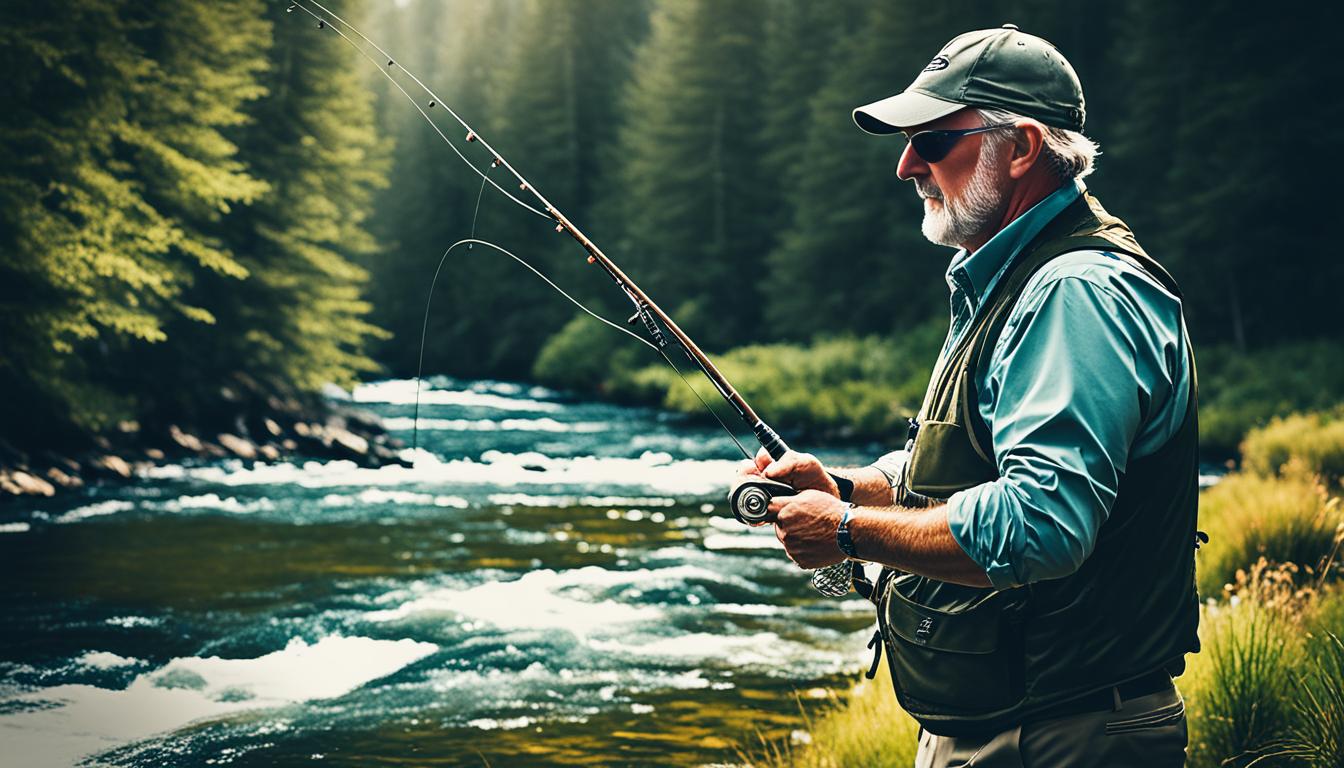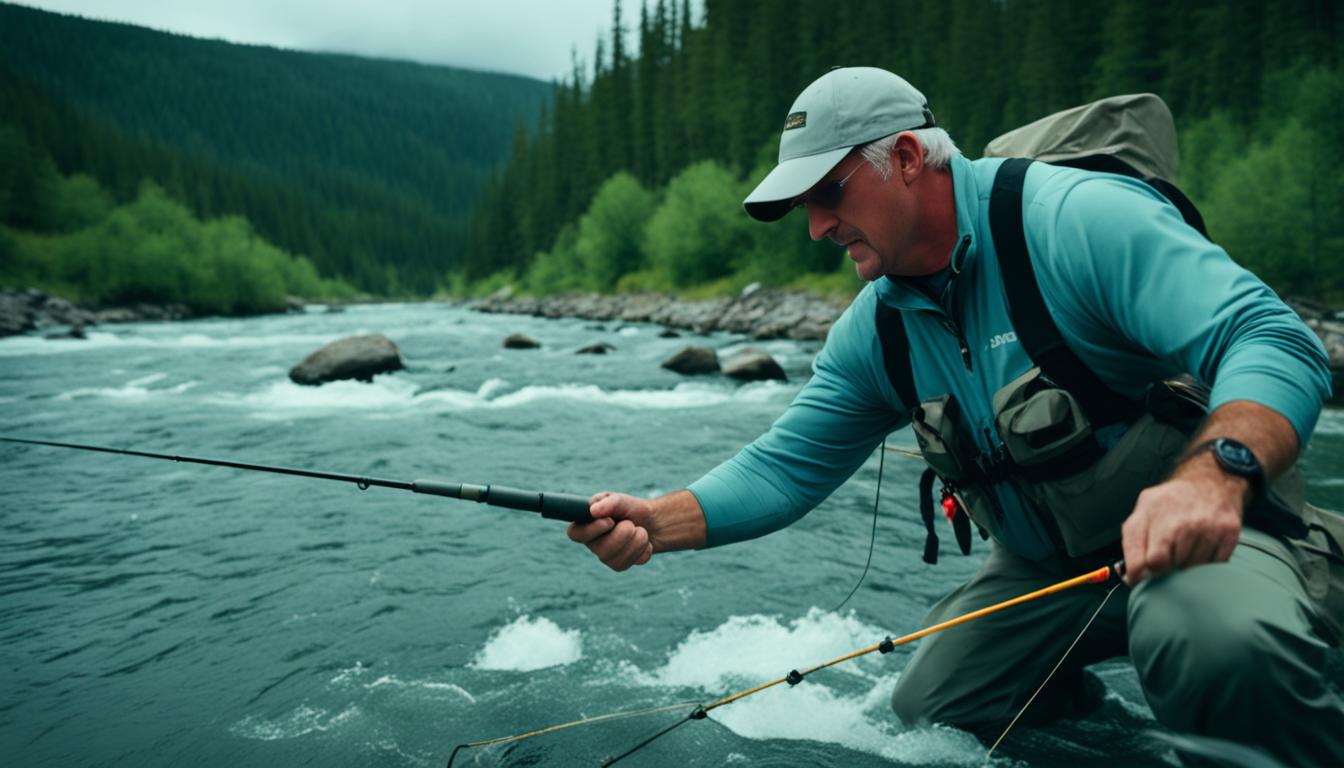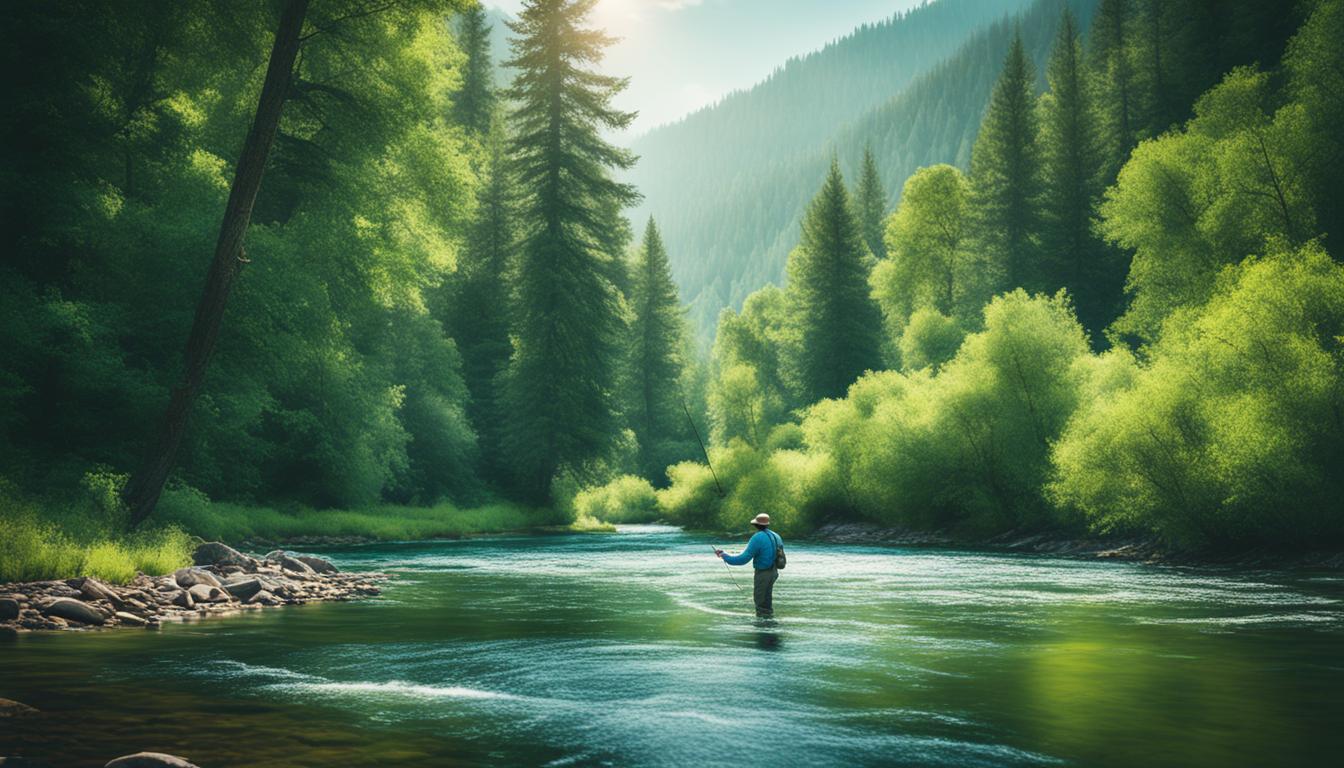In the world of fly fishing, there are numerous terms and jargon that may seem unfamiliar, especially to beginners. At times, this extensive vocabulary can be overwhelming. But fear not, as we are here to help! In this article, we have compiled an essential glossary of fly fishing terminology to assist you in navigating this fascinating sport.
By familiarizing yourself with these fly fishing terms, you will not only enhance your overall fishing experience but also be able to communicate effectively with fellow fly fishers, ensuring that you’re always on the same page.
Key Takeaways
- Understanding fly fishing terminology is essential for effective communication and improvement in the sport.
- Familiarize yourself with basic fly fishing terms to build a strong foundation.
- Explore the different types of fish species and fishing techniques through the lens of fly fishing.
- Learn to read the water and understand the importance of different fishing locations.
- Discover the various types of flies used in fly fishing and the art of fly tying.
Basic Fly Fishing Terms
Fly fishing has its own set of terms and jargon that can be confusing to newcomers. This section will cover some of the basic terms used in fly fishing, including:
Fly: A fly is an artificial lure made to imitate insects or other small creatures that fish prey upon. Flies are typically constructed with feathers, fur, and other materials, and are attached to a hook using thread.
Casting: Casting refers to the act of propelling the fly line and fly through the air in order to deliver it to a desired location on the water. It requires the angler to whip the rod back and forth, using the flex and tension of the rod to generate momentum and propel the line forward.
Leader: The leader is a section of monofilament or fluorocarbon line that connects the fly to the fly line. It is tapered to provide a smooth transfer of energy from the fly line to the fly, allowing for more delicate presentations.
Tippet: The tippet is the final section of the leader, which is attached to the fly. It is typically thinner and more transparent than the rest of the leader, allowing for a more natural presentation and increased sensitivity.
Pro Tip: When selecting a fly, consider the type of insect or baitfish that the fish in your area typically feed on. Matching the hatch is a commonly used technique that involves selecting a fly that closely resembles the natural prey.
Fly Fishing Terms: Fly, Casting, Leader, Tippet
| Term | Definition |
|---|---|
| Fly | An artificial lure made to imitate insects or other small creatures that fish prey upon. |
| Casting | The act of propelling the fly line and fly through the air to deliver it to a desired location on the water. |
| Leader | A section of monofilament or fluorocarbon line that connects the fly to the fly line. |
| Tippet | The final section of the leader, which is attached to the fly. |
Types of Fish and Fishing Techniques
Fly fishing offers a diverse range of fish species to target and various fishing techniques to employ. Understanding the fly fishing jargon and fishing terminology explained is crucial in mastering these techniques and increasing your chances of success on the water.
Fish Species
When it comes to fly fishing, you’ll encounter a wide variety of fish species. Each species has its own unique characteristics and behaviors, requiring specific techniques and strategies. Here are some common fish species that fly anglers pursue:
- Trout
- Bass
- Salmon
- Steelhead
- Panfish
Understanding the habitat, feeding patterns, and preferred water conditions of these fish species is essential in choosing the right flies and presenting them effectively.
Fishing Techniques
Fly fishing techniques encompass a wide range of approaches that are tailored to specific fishing scenarios. Here are some popular fishing techniques utilized by fly anglers:
- Dry Fly Fishing: This technique involves imitating insects that float on the water’s surface, tempting fish to rise and take the fly.
- Nymph Fishing: Nymphs imitate immature aquatic insects, and this technique involves presenting the fly beneath the water’s surface to target feeding fish.
- Streamer Fishing: Streamers are large, baitfish imitations, and this technique involves stripping or twitching the fly to provoke aggressive strikes.
- Euro Nymphing: Euro Nymphing is a specialized technique that uses long, sensitive fly rods and heavy nymphs to detect subtle strikes in fast-moving water.
- Spey Casting: This technique is primarily used in rivers for targeting salmon and steelhead, utilizing two-handed fly rods and long casts.
By understanding and mastering these fishing techniques, you’ll have the flexibility to adapt to different fishing conditions and effectively entice fish to take your fly.

With a solid grasp of the fly fishing jargon and fishing terminology explained, you’ll be better equipped to tackle various fish species and employ the appropriate techniques. Whether you’re casting dry flies to rising trout or swinging streamers for aggressive bass, expanding your repertoire of fishing techniques will enhance your overall fly fishing experience.
Reading the Water and Fishing Locations
When it comes to fly fishing, one of the essential skills to master is reading the water. Understanding the different water conditions and fishing locations can greatly increase your chances of success on the water.
Let’s dive into some of the fly fishing jargon and fishing vocabulary used to describe various water conditions and fishing spots:
1. Riffles
Riffles are shallow, rocky areas where the water flows faster and creates small waves and turbulence. They provide ample oxygen and cover for fish, making them excellent feeding grounds.
2. Pools
Pools are deeper sections of water located downstream from riffles. They offer slower current and deeper holes where fish can rest and find shelter. Pools are often prime spots for trout and other species.
3. Runs
Runs are areas where the water flows steadily and smoothly, creating a consistent current. These sections provide excellent opportunities for fish to feed and can be productive fishing locations.
4. Tailouts
Tailouts are the downstream sections of a pool or run where the water starts to shallow and merge with the riffles. Fish often gather in these transitional areas, making them ideal spots for casting your flies.
5. Eddies
Eddies are circular currents that form behind obstacles such as rocks or logs. They create a calm zone where food collects, attracting fish. Casting near eddies can yield exciting bites.
“Reading the water is like deciphering a secret code – understanding its language helps us unlock the hidden treasures beneath the surface.”
By familiarizing yourself with these fishing techniques and vocabulary, you’ll gain a deeper understanding of where fish may be located and how to approach different water conditions. Remember to observe the water’s movement, depth, and structure to make informed decisions when selecting your fishing spots.
Next, we’ll explore the different types of flies and the art of fly tying. But before we move on, let’s take a moment to appreciate the beautiful play of light on the water in the image below:
Fly Types and Fly Tying
In the world of fly fishing, the fly itself is an essential element. Flies are imitations of insects, baitfish, or other organisms that entice fish to bite. There are various types of flies that serve different purposes in different fishing conditions.
Dry Flies: These flies float on the water’s surface and imitate adult insects that have hatched and are resting on the water. They are often used in dry fly fishing, where the angler presents the fly on the surface to mimic the natural behavior of the insects.
Nymphs: Nymphs are underwater flies that imitate the larval stage of insects. They are designed to sink below the surface and mimic the insects in their pre-emerged state. Nymph fishing is popular during periods when insects are not hatching.
Streamers: Streamers imitate baitfish or other aquatic creatures and are designed to be retrieved through the water to mimic the movement of prey. They are often larger and weighted to attract predatory fish such as trout, bass, or pike.
Wet Flies: Wet flies are designed to sink beneath the water’s surface and mimic emergent insects or small baitfish. They can be fished with different techniques, including dead drifting, swinging, or stripping.
Terrestrials: Terrestrial flies imitate insects that live on land, such as ants, beetles, or grasshoppers. They are often used during the summer months when these insects fall into the water and become a food source for fish.
Fly tying is the process of creating flies using various materials such as feathers, fur, and synthetic materials. Anglers can tie their own flies to customize them for specific fishing conditions or to match the insects found in their local waters.
Fly Tying Materials
When tying flies, anglers have a wide range of materials to choose from, including:
- Feathers
- Hair
- Tinsel
- Thread
- Beads and eyes
- Synthetic materials
These materials can be combined and shaped to create realistic and effective fly patterns. The art of fly tying allows anglers to exercise creativity and experiment with different designs to attract fish.
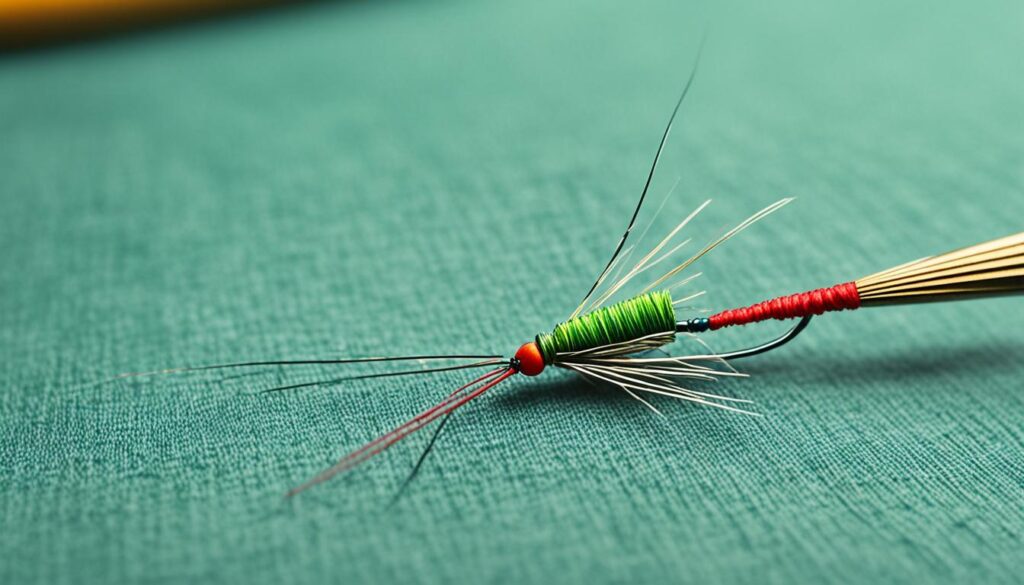
| Flies | Purpose |
|---|---|
| Dry Flies | Float on the water’s surface and imitate adult insects |
| Nymphs | Imitate the larval stage of insects and are fished underwater |
| Streamers | Imitate baitfish or other aquatic creatures and are retrieved through the water |
| Wet Flies | Sink beneath the surface and mimic emergent insects or small baitfish |
| Terrestrials | Imitate insects that live on land, such as ants, beetles, or grasshoppers |
Conclusion
Fly fishing may seem daunting at first, with its unique terminology and jargon. However, by familiarizing yourself with essential fly fishing terms, you can confidently communicate with other fly fishers and enhance your angling experience.
Whether you’re learning to cast, tie flies, or read the water, understanding the language of fly fishing opens up a new world of possibilities on the water. By mastering common fly fishing terms like “backcast,” “mending,” and “presentation,” you’ll be able to execute techniques more effectively and adapt to different fishing conditions.
As you immerse yourself in the fly fishing community, use this glossary as your guide to building foundational knowledge. From understanding the differences between dry flies, nymphs, and streamers, to recognizing the significance of rising fish or riffles, expanding your fishing vocabulary will deepen your appreciation for the sport.
So, grab your fly rod, tie on your favorite fly pattern, and let the language of fly fishing guide you on your angling adventures. From the thrill of the strike to the art of the cast, mastering the essential fly fishing words will elevate your skills and help you create lasting memories on the water.
FAQ
What are some basic fly fishing terms that beginners should know?
Some basic fly fishing terms include casting, presentation, drift, hookset, tippet, leader, and backing.
What are some common fish species targeted in fly fishing?
Some common fish species targeted in fly fishing include trout, salmon, bass, pike, and carp.
What are some terms used to describe different water conditions and fishing locations?
Some terms used to describe different water conditions and fishing locations include riffle, pool, run, eddy, current, and tailwater.
What are different types of flies used in fly fishing?
Different types of flies used in fly fishing include dry flies, nymphs, streamers, and wet flies.
What is fly tying?
Fly tying is the process of creating artificial flies by hand using various materials such as feathers, fur, and thread.
